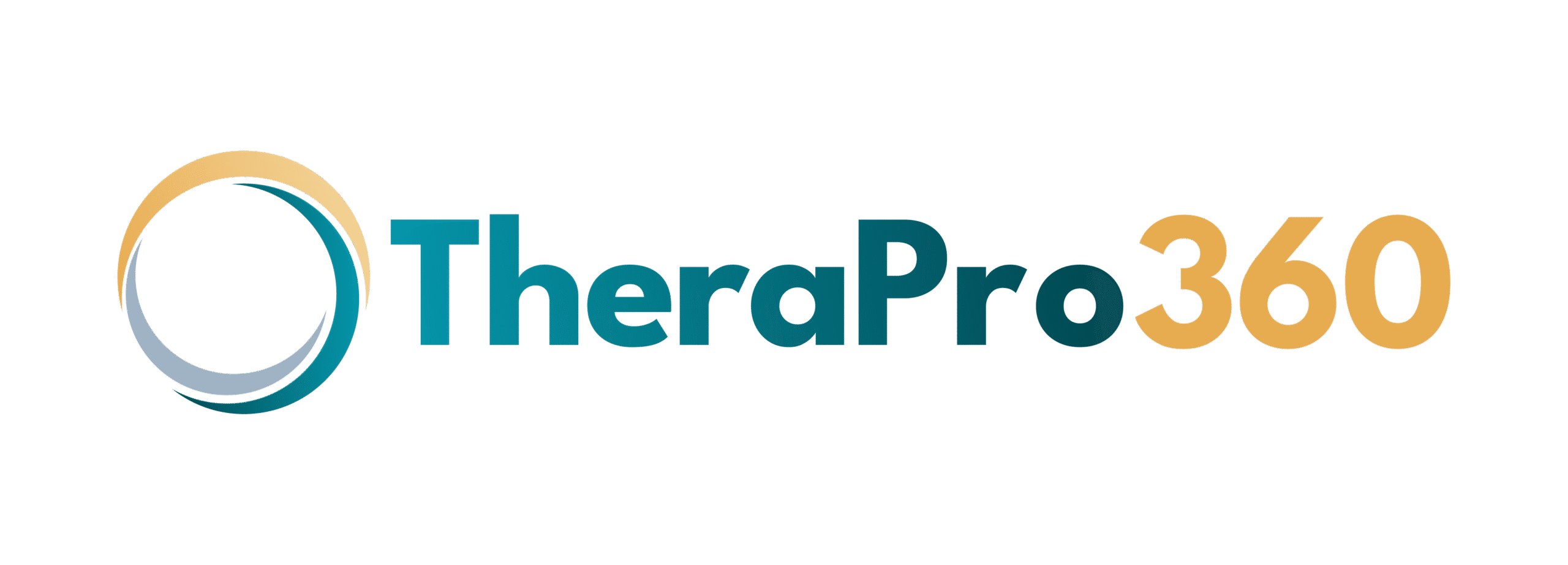
Blog
The Hidden Costs of Manual Billing in Speech Therapy Practices
Expert web designers ensure the site and software is easy to use.The Hidden Costs of Manual Billing in Speech Therapy Practices
Many speech therapy practice owners believe they are saving money by sticking with manual billing processes. They see the monthly subscription for practice management software as an expense, not an investment. What they fail to see are the significant hidden costs—in time, lost revenue, and staff morale—that are silently draining their practice’s profitability. The familiar routine of paper superbills, manual data entry, and endless phone calls with insurance companies feels controllable, but it is a system riddled with inefficiency and financial leaks.
This reliance on outdated methods creates a constant state of administrative friction, pulling skilled speech-language pathologists (SLPs) and office managers away from patient care and strategic growth. The true cost of manual billing isn’t found on a balance sheet; it’s in the claim denials that pile up, the cash flow that slows to a trickle, and the talented staff who burn out from the administrative burden.
This comprehensive guide will uncover the real financial and operational impact of manual billing on speech therapy practices. We will break down why these traditional methods persist, quantify their hidden costs, and demonstrate the clear return on investment (ROI) that modern practice management software for speech therapists delivers. It’s time to stop letting inefficient processes dictate your practice’s potential.
Why Manual Billing Still Exists in Speech Therapy Practices
In an age of digital transformation, it may seem counterintuitive that so many specialized healthcare practices still rely on manual billing. Yet, for many speech therapy clinics, particularly smaller private practices, the old way of doing things feels safer and more familiar. This inertia is often rooted in a combination of habit, misconceptions about cost, and a lack of awareness about the power of modern software solutions.
The traditional billing workflow and its limitations
The manual billing process is a multi-step, labor-intensive cycle that will be familiar to many practice owners and administrative staff. It typically looks something like this:
- Paper Trail Begins: The SLP finishes a session and fills out a paper “superbill,” noting the patient’s name, date of service, and the procedures performed.
- Manual Data Entry: The superbill is handed to a front desk staff member or a biller, who then manually types the information into a basic accounting program or a billing portal. This step alone is a major source of errors, from transposed policy numbers to incorrect CPT codes.
- Claim Creation: A claim is manually created. This often involves navigating a clunky insurance payer website or filling out a CMS-1500 form by hand or in a static PDF.
- Fax or Mail Submission: Many manual systems still rely on submitting claims via fax or postal mail, which are slow, unreliable, and offer no way to track receipt.
- The Waiting Game: The practice waits weeks or months for a response, with no visibility into the claim’s status.
- Denial and Follow-Up: A denial often arrives via mail, with a cryptic explanation. The staff must then get on the phone with the insurance company, wait on hold, investigate the issue, make corrections, and resubmit the claim, starting the cycle all over again.
- Payment Posting: If the claim is paid, a paper Explanation of Payment (EOP) arrives. A staff member must then manually post the payment, calculate the patient’s responsibility, and generate a paper invoice.
Each step in this chain is a potential point of failure. The process is slow, prone to human error, and lacks any form of proactive error checking. It creates a reactive system where staff are always chasing down problems instead of preventing them.
The misconception that manual billing saves money
The most common reason practice owners stick with manual billing is the belief that it’s cheaper. They look at the monthly fee for practice management software for speech therapists and see it as an added expense. They think, “My office manager and I can handle this ourselves, so why pay for software?”
This is a critical misunderstanding of cost. It fails to account for the “soft costs” of manual labor and the “hard costs” of lost revenue. The hours your staff (or you) spend on manual data entry, claim follow-up, and reworking denials are not free. This is valuable time that could be spent on revenue-generating activities like seeing more patients, marketing the practice, or developing new programs.
Furthermore, a high denial rate directly impacts your bottom line. If 15% of your claims are denied on first submission and require an average of 30 minutes of staff time to rework, the labor cost alone can quickly exceed the monthly fee for an automated software solution. The cost of the software is a predictable, fixed expense; the cost of manual billing is a variable and often invisible drain on profitability.
How outdated systems slow down revenue cycles
Your revenue cycle is the time it takes from when you provide a service to when you receive payment for it. In a healthy practice, this cycle should be as short as possible. Manual billing processes artificially extend this cycle, creating significant cash flow problems.
- Submission Delays: The time it takes for paper claims to be mailed, received, and entered into the payer’s system can add a week or more to the front end of the cycle.
- Correction Delays: When a claim is denied, the manual process of investigating, correcting, and resubmitting can take days or weeks.
- Payment Delays: Even after a claim is approved, waiting for a paper check and EOB to arrive in the mail further slows down your access to the funds.
An automated system using electronic claims can shrink the submission-to-payment timeline from 60-90 days to as little as 14-21 days. For a private practice, this difference in cash flow can be transformative, providing the working capital needed to pay salaries, cover rent, and invest in growth.
The Hidden Financial and Operational Costs of Manual Billing
The true cost of manual billing extends far beyond simple inefficiencies. It creates a ripple effect of financial losses, compliance risks, and operational burdens that can hamstring a speech therapy practice and prevent it from thriving.
Increased claim denials and rejections
Manual billing is a breeding ground for claim denials. Without automated checks and balances, mistakes are not only possible but probable.
Common reasons for denials that are rampant in manual systems include:
- Data Entry Errors: A single typo in a patient’s name, birthdate, or policy ID is enough for an instant rejection.
- Coding Mistakes: Choosing the wrong CPT code, forgetting a required modifier, or using an outdated ICD-10 code are frequent issues.
- Eligibility Issues: Providing services to a patient whose coverage has lapsed is a common and costly mistake that manual eligibility checks (or a lack thereof) fail to catch.
- Missing Information: Forgetting to include the referring physician’s NPI number or leaving a required field blank on a CMS-1500 form will lead to a denial.
Industry benchmarks suggest a “healthy” denial rate is below 5%. Many practices using manual systems experience denial rates of 15-20% or even higher. Each denial represents delayed revenue and additional labor costs to resolve.
Lost time from manual data entry and follow-ups
Consider the weekly time sink of manual administrative tasks in a small- to mid-sized practice:
- Data Entry: Entering patient demographics, insurance details, and charges from superbills can easily consume 5-10 hours per week.
- Claim Submission: Manually creating and submitting claims, whether on payer portals or via fax, can take another 5 hours.
- Follow-Up: The most time-consuming task is often following up on unpaid claims. Sitting on hold with insurance companies can eat up 10+ hours per week.
- Payment Posting: Manually reconciling paper EOBs and posting payments adds another 3-5 hours.
This totals 23-30 hours per week—nearly a full-time employee’s salary—spent on tasks that could be largely automated. This isn’t just inefficient; it’s a profound misallocation of your practice’s most valuable resource: your team’s time.
The cost of billing errors and compliance risks
Billing errors are not just about denials; they can also lead to serious compliance issues. Submitting a claim with an incorrect code might be an honest mistake, but if it results in overpayment, you are legally obligated to return the funds. A pattern of such “mistakes” could trigger an audit from payers or even federal authorities, leading to significant financial penalties.
HIPAA compliance is another major risk. Manual processes often involve paper records—superbills, patient charts, EOBs—that contain protected health information (PHI). These documents can be misplaced, viewed by unauthorized individuals, or improperly stored, creating a risk of a HIPAA breach. A single breach can result in fines ranging from thousands to millions of dollars, not to mention irreparable damage to your practice’s reputation.
The human cost — burnout and staff turnover
The constant stress and frustration of dealing with manual billing takes a heavy toll on your staff. Highly trained SLPs become demoralized when they have to spend their evenings catching up on paperwork. Office managers and billers burn out from the endless cycle of claim rejections and combative phone calls with insurance representatives.
This administrative burden is a leading cause of burnout and turnover in private healthcare practices. The cost of replacing a trained employee is substantial, often estimated at 50-150% of their annual salary when accounting for recruitment, hiring, and training. A practice stuck in a cycle of high turnover will struggle to maintain consistency in patient care and will constantly be spending resources on training new staff, further eroding profitability.
How Manual Billing Impacts Practice Profitability
The operational inefficiencies of manual billing translate directly into reduced profitability. An inefficient back office acts like a brake on your practice’s financial engine, limiting your ability to grow and reinvest in your mission.
Cash flow disruptions and delayed reimbursements
Cash flow is the lifeblood of any business. Manual billing creates a volatile and unpredictable revenue stream. When your average reimbursement time is 60+ days and a significant percentage of your claims are tied up in the denial management process, you create a cash flow crisis.
This forces practice owners into a difficult position. You may have to delay paying vendors, hold off on purchasing new therapy materials, or even dip into personal savings to make payroll. This financial instability makes strategic planning nearly impossible. You can’t confidently hire a new therapist or invest in a marketing campaign if you don’t know when you’ll be paid for the services you provided two months ago.
Reduced capacity to take on more clients
The time spent on manual billing is time not spent on growth. If an SLP/owner is spending 10-15 hours a week on administration, that is 10-15 hours they are not seeing patients. At an average reimbursement rate of $100 per session, that’s $1,000-$1,500 in lost revenue potential every week.
Similarly, if your front office staff is overwhelmed with billing tasks, they have no time for proactive patient engagement, scheduling follow-ups, or managing a waitlist. Your practice’s growth becomes capped by its administrative capacity. You may have strong demand for your services but are unable to meet it because your team is bogged down in paperwork.
Administrative overhead eating into profits
Profitability is a simple equation: Revenue – Expenses = Profit. Manual billing inflates the “Expenses” side of this equation in several ways:
- Labor Costs: The salary and benefits paid to staff for time spent on inefficient tasks that could be automated.
- Rework Costs: The hidden cost of labor required to fix and resubmit denied claims. The industry average to rework a single claim is over $25. For a practice with 100 denials per month, that’s $2,500 in wasted administrative spending.
- Lost Revenue: Unpaid or underpaid claims that are eventually written off as bad debt because the practice lacks the time or tools to effectively appeal them.
- Opportunity Costs: The revenue lost by not being able to see more patients or expand services.
When you add up these costs, it becomes clear that manual billing is not a cost-saving measure; it is a significant drain on profitability.
The ROI of Practice Management Software for Speech Therapists
Implementing a modern practice management software for speech therapists is not an expense; it is a high-yield investment. The return on investment (ROI) is generated by cutting hidden costs, increasing revenue, and freeing up time for growth. Automation streamlines your entire operation, creating a more profitable and sustainable practice.
Automating billing to reduce denials and delays
This is the most immediate and impactful area of ROI. By automating the billing cycle, you directly attack the root causes of financial leakage.
- Reduced Denial Rate: Software with automated claim scrubbing and real-time eligibility verification can lower your denial rate from 15-20% down to 2-5%. This means more claims are paid correctly on the first submission, eliminating rework costs.
- Accelerated Reimbursements: Electronic claim submission and electronic remittance advice (ERA) dramatically shorten the revenue cycle. Getting paid in 21 days instead of 75 days has a profound impact on your cash flow.
- Increased Collection Rate: With better tools to track unpaid claims and manage appeals, you can more effectively collect the money you are owed, reducing write-offs.
Streamlining documentation and insurance claims
The integration of clinical documentation and billing is a key driver of efficiency.
- Faster Note-Taking: SLPs using customizable, therapy-specific templates can complete their daily notes in significantly less time, while ensuring compliance. This frees them up to see more patients or focus on treatment planning.
- Elimination of Superbills: When a clinical note is signed, the charges can automatically flow to the billing module. This eliminates the need for paper superbills, saving time and preventing lost charges.
- Effortless Audit Responses: When a payer requests documentation to support a claim, you can generate a complete, professional-looking packet of information in minutes, rather than spending hours digging through paper files.
Real-time insights for smarter financial decisions
You can’t manage what you can’t measure. A major ROI of practice management software comes from its powerful reporting capabilities.
- Financial Dashboards: At-a-glance dashboards give you a real-time view of your practice’s financial health, including key metrics like charges, payments, and outstanding A/R.
- Denial Analysis: Reports that categorize denials by payer, CPT code, and reason allow you to spot trends and address systemic issues, preventing future denials.
- Therapist Productivity: Track metrics like units billed per therapist and revenue per visit to make informed decisions about staffing, compensation, and service offerings.
This data empowers you to move from reactive problem-solving to proactive, data-driven management.
Quantifying the return — time saved and revenue gained
To make a strong business case, it’s helpful to put numbers to the ROI. Consider this simplified framework for a small practice with two SLPs.
Manual Billing Costs (Monthly):
- Administrative Staff Time: 25 hours/week @ $25/hour = $2,500/month
- Cost of Reworking Denials: 50 denials/month @ $25/rework = $1,250/month
- Lost Revenue (written off): 2% of billings ($40,000) = $800/month
- Total Hidden Monthly Cost: $4,550
Practice Management Software (Monthly):
- Software Subscription Fee: ~$300/month
- Administrative Staff Time (with automation): 10 hours/week @ $25/hour = $1,000/month
- Cost of Reworking Denials (reduced rate): 10 denials/month @ $25/rework = $250/month
- Lost Revenue (reduced rate): 0.5% of billings = $200/month
- Total Monthly Cost with Software: $1,750
Monthly ROI Calculation:
- Savings: $4,550 (Manual Cost) – $1,750 (Software Cost) = $2,800 per month
- Annual ROI: $2,800 x 12 = $33,600
This calculation doesn’t even include the added revenue from increased therapist capacity or the reduced costs associated with lower staff turnover. The financial case for automation is overwhelmingly positive.
Key Features That Drive ROI in Practice Management Software
When evaluating software, focus on the features that will deliver the most significant return on investment by directly addressing the pain points of manual billing.
Integrated billing and scheduling tools
An integrated system where the schedule “talks” to the billing module is fundamental. When an appointment is checked in, it should automatically create a charge, ready for coding. This eliminates manual charge entry from paper superbills and ensures no services are missed.
Automated claim submission and payment tracking
The software must provide a seamless, end-to-end electronic workflow. This includes:
- Claim Scrubbing: An automated tool that checks claims for errors before submission. This is your single best defense against denials.
- Clearinghouse Integration: A built-in connection to a clearinghouse for one-click electronic claim submission and status tracking.
- Electronic Remittance Advice (ERA): The ability to receive ERAs (the electronic version of an EOB) and have the system automatically post payments, make adjustments, and flag denials for review. This feature alone can save 10+ hours of manual work per week.
Real-time eligibility verification and alerts
This feature prevents you from providing services to patients with invalid insurance. The system should automatically check eligibility for upcoming appointments and display clear alerts on the schedule for any patients with coverage issues, allowing your staff to resolve the problem before the session.
Reporting dashboards to measure financial performance
To manage your ROI, you need data. Look for a system with strong analytics, including:
- A/R Aging Reports: To help you manage collections and keep your accounts receivable low.
- Denial Management Reports: To identify patterns and fix the root causes of denials.
- Key Performance Indicator (KPI) Dashboards: For a quick, visual overview of your practice’s financial health.
Secure, HIPAA-compliant data management
A secure, cloud-based platform protects you from the significant financial and reputational risks of a HIPAA breach. The vendor must provide a Business Associate Agreement (BAA) and demonstrate robust security measures like data encryption and role-based access controls. This feature delivers ROI by mitigating catastrophic risk.
How to Transition from Manual Billing to an Automated System
Making the switch from a manual process to an automated software system can feel daunting, but with a structured approach, it can be a smooth and successful transition.
Evaluating your current billing workflow
Before you can fix your process, you need to understand it completely. Map out every step of your current billing workflow, from patient intake to final payment. Identify the biggest bottlenecks, the most time-consuming tasks, and the most common sources of errors. This analysis will not only help you build a business case but also create a shopping list of “must-have” features for a new system.
Building a cost-benefit case for automation
Use the ROI framework outlined earlier to quantify the costs of your current system and project the savings and revenue gains from automation. Calculate the hours your team spends on manual tasks and translate that into a dollar figure. Estimate the revenue lost to denials and write-offs. Presenting this clear, data-backed case to stakeholders (or to yourself) makes the decision to invest in software logical and straightforward.
Onboarding and training your billing team
Your team’s adoption of the new system is critical to its success. Choose a software vendor that offers comprehensive onboarding and training. A good implementation process should include:
- A dedicated implementation specialist.
- Data migration support to import patient demographics.
- Customized training sessions for different roles (front desk, billers, therapists).
- Go-live support to ensure a smooth first few weeks on the new system.
Involve your team early in the selection process to foster buy-in and excitement about the new tools. Frame the change not as a replacement for their work, but as an empowerment tool that will eliminate their most frustrating tasks.
Setting measurable ROI goals post-implementation
Once you go live, set specific, measurable goals to track your return on investment. These might include:
- Reduce first-submission denial rate to under 5% within 90 days.
- Reduce average days in A/R from 60 to 30 within six months.
- Decrease time spent on manual billing tasks by 50% within 60 days.
- Increase therapist productivity (billable hours) by 10% within six months.
Regularly review your progress against these goals using the software’s reporting tools. This will help you demonstrate the value of your investment and identify areas where you can further optimize your new workflows.
Case Study: The ROI of Automation in a Speech Therapy Practice
Practice Profile: A pediatric speech therapy private practice with three full-time SLPs and one office manager who handled all billing.
Baseline: costs and inefficiencies of manual billing
The practice used a paper-based system. SLPs filled out paper superbills, and the office manager manually entered them into multiple insurance portals. The practice was struggling with:
- A high denial rate of 18%.
- An average reimbursement time (days in A/R) of 82 days.
- Significant administrative burden: The office manager spent nearly 30 hours per week on billing-related tasks, leading to frequent backlogs and high stress.
- Cash flow instability: The long payment cycle made it difficult to manage payroll and plan for expenses.
Implementation: adopting practice management software
The practice owner, after calculating the hidden costs, invested in an all-in-one practice management software for speech therapists. The vendor provided a structured onboarding process, migrating their patient data and training the office manager and SLPs over two weeks. They focused on fully utilizing the integrated scheduling, EMR, and automated billing features.
Results: reduced denials, faster payments, and improved profitability
Within six months of implementation, the practice saw transformative results:
- Denial rate dropped from 18% to 4% due to automated eligibility checks and claim scrubbing.
- Average days in A/R fell from 82 days to 25 days, dramatically improving cash flow.
- The office manager’s time on billing tasks was reduced from 30 hours/week to just 8 hours/week. This freed her up to focus on patient experience, marketing, and managing the practice’s waitlist.
- Profitability increased by over $5,000 per month from the combination of reduced administrative labor costs, fewer write-offs, and the capacity for each SLP to see one additional patient per week.
The software subscription, which initially seemed like an expense, delivered a return of more than 10x its cost.
Long-Term Benefits of Billing Automation for Speech Therapists
The ROI of automation goes beyond the immediate financial gains. It positions your practice for long-term health, growth, and sustainability.
Predictable revenue and improved cash flow
With a streamlined, automated billing system, your revenue becomes more stable and predictable. You can forecast your income with much greater accuracy, empowering you to make strategic investments in your practice with confidence. Consistent cash flow reduces stress and allows you to focus on the future, not just on surviving the next payroll cycle.
Scalable operations as your practice grows
Manual systems are not scalable. Hiring a new therapist in a manual system means a proportional increase in administrative workload. With an automated system, you can add new therapists, or even new locations, with minimal increase in administrative overhead. The software provides a scalable foundation that supports your growth, rather than hindering it.
More focus on patient outcomes, less on paperwork
Perhaps the most important long-term benefit is the cultural shift it enables. When you remove the administrative friction from your practice, you create a better environment for both your staff and your patients. SLPs who are freed from burdensome paperwork have more mental energy and time to devote to clinical excellence and innovative treatment planning. A less-stressed, more efficient team leads to higher quality care and better patient outcomes—the ultimate mission of any therapy practice.
Conclusion: Stop Letting Manual Billing Drain Your Practice’s Profits
Sticking with manual billing because it seems “free” is one of the most expensive mistakes a speech therapy practice owner can make. The hidden costs of wasted time, lost revenue from denials, compliance risks, and staff burnout create a constant drag on your profitability and your ability to deliver the best possible care. Manual processes don’t save you money; they just hide the expense in operational chaos and unrealized potential.
Key takeaways on the hidden costs of manual processes
- Manual billing is a direct cause of high claim denial rates and delayed payments.
- The hours your team spends on administrative tasks that could be automated represent a significant, hidden labor cost.
- Unpredictable cash flow caused by inefficient billing stifles growth and creates immense stress for practice owners.
Why automation offers the best ROI for speech therapy practices
Automation through a dedicated practice management software for speech therapists delivers a powerful return on investment. It slashes administrative costs, dramatically reduces denial rates, accelerates your revenue cycle, and provides the data you need to manage your practice intelligently. It replaces guesswork and reaction with efficiency and proactivity.
Next steps: choosing the right practice management software
The path to a more profitable and efficient practice begins with a single step. It’s time to stop the financial bleeding and invest in a tool that will support your growth.
- Analyze your current process to understand your specific pain points and costs.
- Research software solutions designed for therapy practices that specialize in solving those problems.
- Request live demos and involve your team in the evaluation process.
- Choose a partner that offers not just great technology, but also the support and training to ensure your success.
The investment you make in automation will pay for itself many times over, not just in dollars, but in peace of mind and renewed focus on your mission to help patients communicate.
FAQs About Practice Management Software for Speech Therapists
How much ROI can I expect from billing automation?
While the exact ROI varies by practice size and initial inefficiency, most practices can expect a significant return. A conservative estimate would be a 3x-5x return on the software’s cost through reduced administrative time, lower denial rates, and improved collection rates. Many practices, like the case study example, see returns of 10x or more when factoring in the increased capacity for patient care.
Is software adoption worth it for small or solo practices?
Absolutely. In many ways, solo and small practices benefit the most from automation. For a solo SLP, time is their most precious, non-renewable resource. Spending 10-15 hours a week on billing is equivalent to losing over $50,000 a year in potential billing revenue. The monthly cost of software is a small fraction of that. It allows the solo practitioner to focus almost exclusively on clinical work while ensuring their billing is handled efficiently and accurately.
What should I look for when comparing billing platforms?
Focus on three key areas:
- Therapy-Specific Features: Does it have customizable note templates for SLPs? Does it handle therapy-specific modifiers and coding rules?
- End-to-End Automation: Look for a truly integrated system with scheduling, EMR, and billing. Essential features are real-time eligibility checks, automated claim scrubbing, and electronic remittance (ERA) posting.
- Support and Partnership: Does the vendor offer robust training, implementation support, and responsive customer service? Read reviews and ask for references.
How long does it take to see ROI after implementation?
You can start seeing a return almost immediately. The reduction in time spent on manual data entry is noticeable in the first week. You will likely see a significant drop in your denial rate and an improvement in your payment velocity within the first 30-60 days as your first batches of clean, electronic claims are processed. A measurable, positive impact on your cash flow is typically evident within the first 90 days.
Why TheraPro360?
Run your practice with simplicity with our streamlined scheduling, seamless telehealth integration, centralized patient portals, intuitive calendar management, and automated invoicing.
Get Started Today















